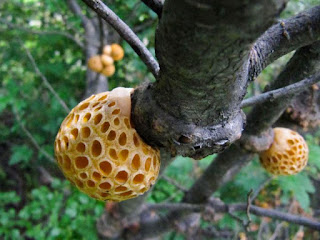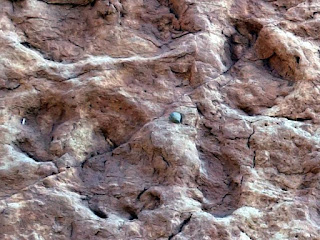Today's round-up of science stories. Links are normally to press releases on EurekAlert (at the bottom end I may also add a couple of newspaper stories). I include quotes from the summary (using quotation marks) in cases where the title alone doesn't reveal what the story is about.
astrobiology
Environmental protection in outer space
"Should regulations for environmental protection be valid beyond our solar system? Currently, extra-terrestrial forms of life are only deemed worth protecting if they can be scientifically investigated. But what about the numerous, presumably lifeless planets whose oxygen atmospheres open up the possibility of their settlement by terrestrial life forms? Theoretical physicist Claudius Gros from Goethe University has taken a closer look at this issue."
Study of archaeal cells could teach us more about ourselves
"Researchers wanted to better understand the archaeal cell by studying Sulfolobus islandicus, an archaeal microorganism that is found in geothermal hot springs. Their results give insight into archaea's potential shared ancestry with eukaryotes and the evolutionary history of cells, while overturning previously held beliefs about what S. islandicus requires for growth."
The helix, of DNA fame, may have arisen with startling ease
botanical
An entire botanical garden of genomes
"An article in the open-access journal GigaScience provides genome sequencing data that triples the number of plant species with available genome data. To date, around 350 land plant genomes have been sequenced; this article provides multiple data types for 760 plant specimens (689 species). This includes images, raw sequencing data, assembled chloroplast genomes, and preliminary nuclear genome assemblies -- all freely available. Effectively this work is a digital representation of an entire botanical garden."
See also my recent
feature on the importance of botanic gardens for conservation.
ecology
In polar regions, warm-blooded marine predators rule
"Even though diversity typically decreases from the tropics to the poles, in the frigid waters of the high latitudes, warm-blooded marine mammals and birds thrive, both in number and species richness."
Biosecurity strategy needed for China's Belt and Road Initiative, researchers say
"China's Belt and Road Initiative (BRI), launched five years ago, includes more than 120 countries, linked by six proposed land-based Economic Corridors between core cities and key ports along traditional international transport routes. But, as new evidence reported in the journal Current Biology on Jan. 24 shows, the risk of introducing invasive species into new areas is substantial as it would threaten native species and biodiversity."
evolution
A reptile platypus from the early Triassic
"No animal alive today looks quite like a duckbilled platypus, but about 250 million years ago something very similar swam the shallow seas in what is now China, finding prey by touch with a cartilaginous bill."

Artist's impression of Eretmorhipis carrolldongi. Related to the dolphin-like ichthyosaurs, Eretmorhipis evolved in a world devastated by the mass extinction event at the end of the Permian era. Its small eyes and bill suggest that like the duckbilled platypus, it hunted by touch.
Credit: Gianluca Danini
Crocodiles have complex past
A new study offers a different version to the evolutionary past of modern-day crocodiles and alligators. The study, published Thursday in the journal Scientific Reports, says crocodiles and alligators came from a variety of surroundings beginning in the early Jurassic Period, and various species occupied a host of ecosystems over time, including land, estuarine, freshwater and marine.
Research shows what it takes to be a giant shark
music
Dopamine modulates reward experiences elicited by music
Don't think that's very surprising, but now you know. Wonder if they also considered the angry and sad songs of the following story:
Computer analysis shows that popular music lyrics become angrier and sadder over time
"A scientific analysis of the sentiment of popular music lyrics from the 1950s to 2016 showed that the expression of anger and sadness in popular music has increased gradually over time, while the expression of joy has declined."
PopPUNK advances speed of bacterial pathogen surveillance
"In a study published today in Genome Research, researchers developed PopPUNK (Population Partitioning Using Nucleotide K-mers), a computational tool for analyzing tens of thousands of bacterial genomes in a single run, up to 200-fold faster than previous methods." Obviously, not really music-related, but I just love the sound of that acronym.
technology
The first tendril-like soft robot able to climb
"Researchers at IIT-Istituto Italiano di Tecnologia obtained the first soft robot mimicking plant tendrils: it is able to curl and climb, using the same physical principles determining water transport in plants. The research team is led by Barbara Mazzolai and results have been published in Nature Communications. In the future this tendril-like soft robot could inspire the development of wearable devices, such as soft braces, able to actively morph their shape."
--------------------
From the news media:
cod supplies to crash due to ocean warming, warns the Guardian.




































